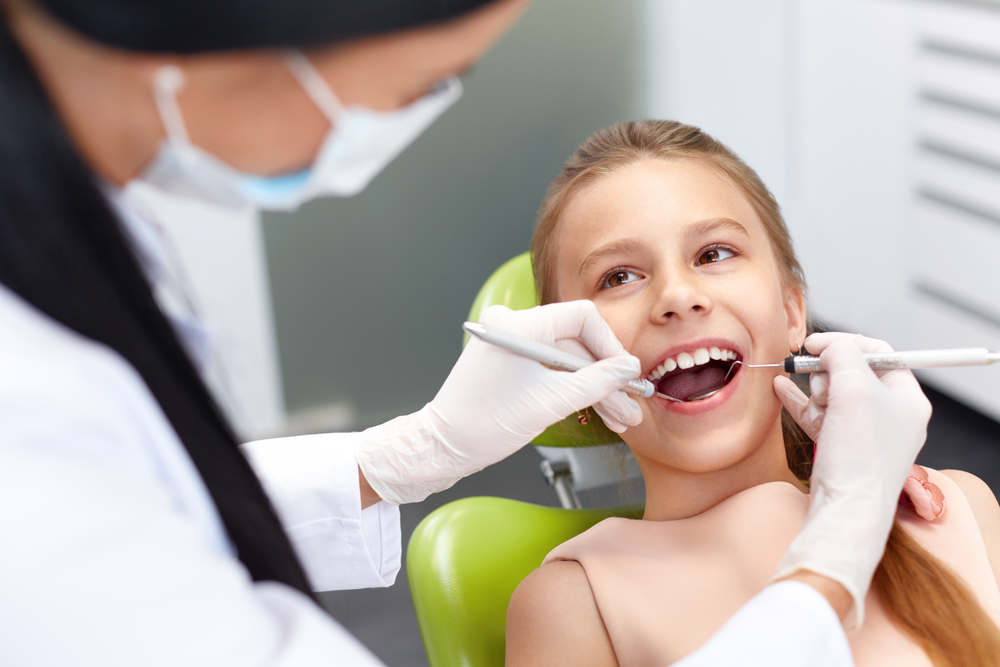
Impacted Canines

Causes, Treatment, and Why Early Detection Matters
Canines, also known as cuspids or “eye teeth,” are crucial for both function and aesthetics. They are the longest teeth in the mouth and play a significant role in biting, guiding the bite, and maintaining facial structure. However, in some cases, canines fail to erupt properly and become impacted, meaning they are trapped beneath the gums or bone.
Impacted canines are a common dental issue, second only to wisdom teeth impaction. Early diagnosis and intervention are key to preventing complications such as misalignment, damage to adjacent teeth, and cyst formation. At Gramercy Dental Group, we specialize in diagnosing and treating impacted canines using a variety of advanced techniques to guide the teeth into proper position or remove them when necessary.

What Causes Impacted Canines?
Several factors can contribute to canine impaction, including:
- Lack of Space in the Dental Arch – If there isn’t enough room for the canines to erupt, they may get stuck behind other teeth.
- Genetic Factors – Family history of impacted teeth can increase the likelihood of canines not erupting properly.
- Extra Teeth or Overcrowding – Supernumerary (extra) teeth or overcrowding can block the eruption path of the canines.
- Premature Loss of Baby Teeth – If baby teeth fall out too early or are removed before the adult canines are ready to emerge, other teeth may shift and block their path.
- Abnormal Growth or Cyst Formation – Some impacted canines may be blocked due to cysts or unusual growth patterns.
Early detection and orthodontic evaluation are essential to addressing these issues before they cause significant problems.
Signs and Symptoms of Impacted Canines
Many patients don’t realize they have an impacted canine until it is diagnosed during a routine dental exam or X-ray. However, some common signs include:
- Delayed Eruption – If a canine has not emerged by age 13-14, it may be impacted.
- Swelling or Pain in the Gums – A partially erupted canine can cause gum irritation, swelling, and discomfort.
- Prolonged Retention of Baby Teeth – If the baby canine remains in place longer than expected, it may indicate an underlying impaction.
- Visible Bulging in the Gums – In some cases, the impacted canine creates a noticeable bulge under the gum line.
- Misalignment of Other Teeth – When a canine is stuck, it can push against neighboring teeth, leading to crowding and shifting.
If you or your child experience any of these symptoms, early intervention is key to preventing more extensive orthodontic or surgical treatments later on.


Treatment Options for Impacted Canines
The treatment approach depends on several factors, including the location of the impacted canine, the patient’s age, and the overall dental alignment. The goal is to bring the impacted canine into its proper position whenever possible or remove it if necessary.
- Early Intervention & Orthodontic Guidance
- Surgical Exposure & Orthodontic Traction
- Canine Extraction & Replacement
Early Intervention & Orthodontic Guidance
For younger patients, early orthodontic evaluation (as early as age 7-10) can help prevent impaction. Treatments like palatal expanders, braces, or space maintainers can create enough room for the canines to erupt naturally.
Benefits: Less invasive than surgical intervention, guides natural eruption, and improves long-term oral health.
Surgical Exposure & Orthodontic Traction
If the canine is stuck beneath the gums, an oral surgeon can expose the tooth and attach an orthodontic bracket. Over time, braces apply gentle force to guide the tooth into its correct position.
- Best for: Patients with impacted canines that are trapped but still in a favorable position for alignment.
- Procedure: A small incision is made to expose the tooth, and a tiny bracket and chain are attached. Orthodontists use this attachment to gradually pull the tooth into alignment.
Canine Extraction & Replacement
In severe cases, the canine may be too deeply impacted, poorly positioned, or causing damage to other teeth. In these cases, extraction is recommended, followed by tooth replacement options such as:
- Dental Implants – A permanent solution that replaces the missing canine with a natural-looking artificial tooth.
- Dental Bridges – A non-surgical alternative that fills the gap using adjacent teeth for support.
- Orthodontic Space Closure – In some cases, orthodontic treatment can close the gap naturally, eliminating the need for replacement.

Why It’s Important to Treat Impacted Canines
Ignoring an impacted canine can lead to complications, including:
- Shifting of Other Teeth – Impacted canines can push against surrounding teeth, leading to crowding, misalignment, and bite problems.
- Cysts or Infection – Impacted teeth can develop cysts or abscesses, which may damage the surrounding bone and teeth.
- Jaw and Bite Problems – Canines play a crucial role in bite function, and missing or impacted canines can lead to bite misalignment and TMJ issues.
- Aesthetic Concerns – Since canines are highly visible in the smile, their absence can cause gaps and an uneven appearance.
Treating impacted canines early improves overall oral health, prevents complications, and ensures a well-aligned, functional bite.
Why Choose Gramercy Dental Group for Impacted Canine Treatment?
At Gramercy Dental Group, we specialize in diagnosing and treating impacted canines with state-of-the-art technology and personalized treatment plans.
- Expert Team of Orthodontists & Oral Surgeons
- Advanced 3D Imaging for Accurate Diagnosis
- Minimally Invasive Surgical Techniques
- Comprehensive Treatment Plans for a Healthy, Beautiful Smile
If you or your child has delayed canine eruption or an impacted tooth, early treatment can prevent future complications and ensure a healthy smile.
Call us today for a consultation.
Why Choose Gramercy Dental Group for Impacted Canine Treatment?
At Gramercy Dental Group, we specialize in diagnosing and treating impacted canines with state-of-the-art technology and personalized treatment plans.
- Expert Team of Orthodontists & Oral Surgeons
- Advanced 3D Imaging for Accurate Diagnosis
- Minimally Invasive Surgical Techniques
- Comprehensive Treatment Plans for a Healthy, Beautiful Smile
If you or your child has delayed canine eruption or an impacted tooth, early treatment can prevent future complications and ensure a healthy smile.
Call us today for a consultation.
Frequently Asked Questions (FAQs) About Impacted Canines
What age should my child be evaluated for impacted canines?
Children should have an orthodontic evaluation by age 7-10. If the canines have not erupted by age 13-14, a dental X-ray can help determine if they are impacted.
Can impacted canines correct themselves naturally?
In some cases, with enough space and proper guidance, canines may erupt on their own. However, if they remain trapped after a certain age, intervention is needed to avoid complications.
Is the surgical exposure of an impacted canine painful?
The procedure is performed under local anesthesia, IV sedation, or general anesthesia, making it completely painless. Some swelling and mild discomfort may occur after surgery, but over-the-counter pain relievers and ice packs help manage recovery.
What if my canine needs to be extracted?
If extraction is necessary, we offer several tooth replacement options, including implants, bridges, or orthodontic space closure to restore function and appearance.
How long does it take to bring an impacted canine into alignment?
The process can take several months to a year, depending on how deeply impacted the canine is. The earlier treatment begins, the faster and easier the process.
